Exam Details
Exam Code
:JN0-692Exam Name
:Service Provider Routing and Switching Support, ProfessionalCertification
:JNCIAVendor
:JuniperTotal Questions
:171 Q&AsLast Updated
:Apr 09, 2025
Juniper JNCIA JN0-692 Questions & Answers
-
Question 71:
Click the Exhibit button.
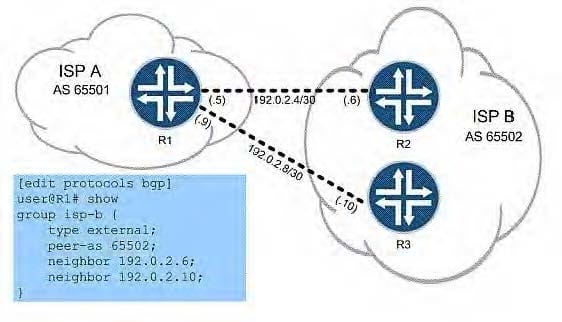
Referring to the exhibit, you work for ISP A and are asked to configure R1 to forward traffic for all routes across both available links, to both routers in ISP B's network. Which three configuration commands do you use? (Choose three.)
A. set protocols bgp group isp-b multihop
B. set policy-options policy-statement load-balance then load-balance per-packet
C. set routing-options forwarding-table import load-balance
D. set protocols bgp group isp-b multipath
E. set routing-options forwarding-table export load-balance
-
Question 72:
Click the Exhibit button.
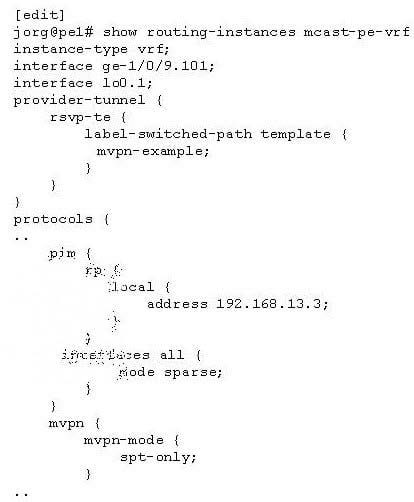
A customer has the configuration shown in the exhibit applied to the VRF C-PIM domain. What can you determine from this configuration?
A. The PE is configured for selective PMSI (S-PMSI) only.
B. The C-RP is collocated on one of the PEs in the MVPN.
C. The MVPN is not working because the receiver-site command is missing.
D. Multicast traffic will not switch to the S-PMSI because the vpn-group-address command (data MDT) is missing.
-
Question 73:
The network design team has decided to activate multicast in the network. Auto-RP has been selected as the RP mechanism. Which PIM operational mode must be enabled in this network?
A. sparse mode
B. sparse-dense mode
C. dense mode
D. source specific multicast
-
Question 74:
Click the Exhibit button.
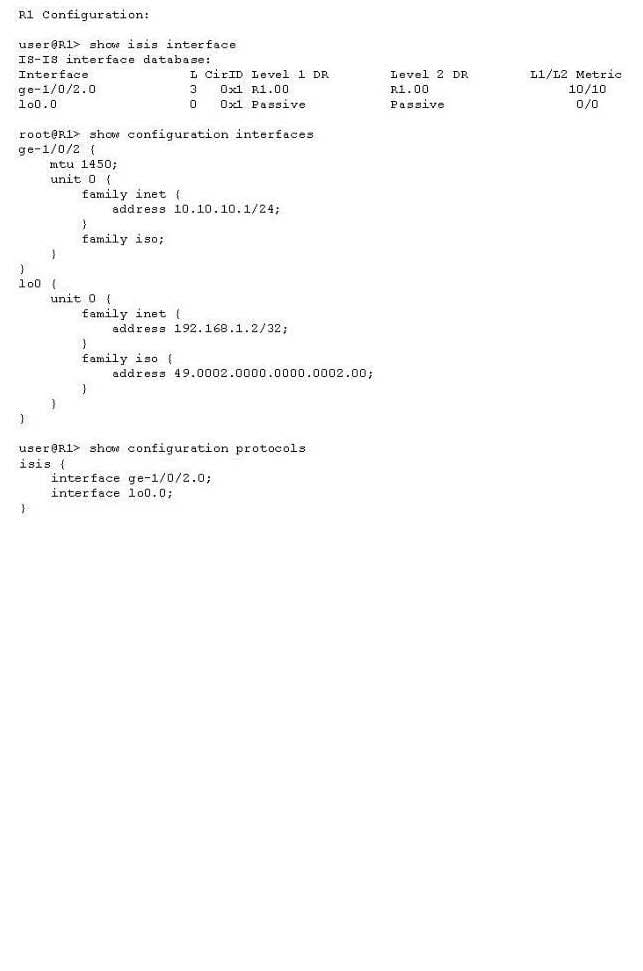

R1 and R2 are directly connected using the interfaces shown in the exhibit. R1 can ping R2's interface, and R2 can ping R1's interface. The IS-IS adjacency will not come up. What is causing the adjacency to fail?
A. The correct levels are not configured under protocols isis.
B. The link MTU is too small to support IS-IS.
C. Authentication is not properly configured for the adjacency.
D. Both routers are configured as the DR, causing a conflict.
-
Question 75:
Click the Exhibit button.
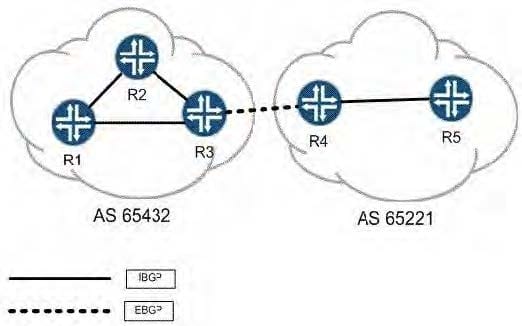
R3 and R4 want to establish an EBGP session between each other's loopback addresses. Static routes have been configured for the loopback addresses and you can ping from loopback to loopback. Their EBGP sessions are configured with multihop to allow for additional hops. The correct AS numbers have been specified at the [routing-options] hierarchy as well. Considering the topology in the exhibit, which statement is true?
A. BGP's protocol preference must be adjusted to be lower than protocol static for the session to establish.
B. Each peer must configure a local-address of their own loopback for the session to establish.
C. Each peer must specify a local-as within their EBGP configuration for the session to establish. D. Each peer must configure multipath for the session to establish.
-
Question 76:
You are evaluating a routing policy for an ISP and you find the ^42+ .* (23|9)$ regular expression. Which three AS paths match the regular expression? (Choose three.)
A. 42 42 42 42 9
B. 42 42 23 500
C. 42 42 42 60 9
D. 42 60 23 9 42
E. 42 69 500 23
-
Question 77:
Click the Exhibit button.

Referring to the exhibit, which type of traffic protection mechanism is used for the LSP?
A. link-protection
B. fast-reroute
C. node-link-protection
D. bypass
-
Question 78:
Click the Exhibit button.
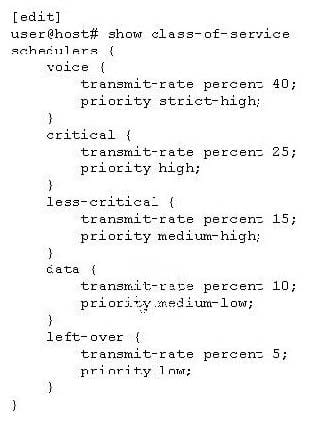
On your MX Series router, traffic using the critical scheduler is out of profile. All other data is currently in profile. Referring to the exhibit, which statement is correct?
A. The critical queue is serviced before the less-critical queue.
B. The critical queue is serviced after the left-over queue.
C. The critical queue is serviced before the data queue.
D. The critical queue is serviced before the voice queue.
-
Question 79:
Click the Exhibit button.

Area 1 has three network links. You need to summarize the network addresses in Area 1 so that Area 0 sees one route representing the network links. A route to each loopback address must still be visible in Area 0.Which configuration sample on R3 and R5 will complete this task?
A. Option A
B. Option B
C. Option C
D. Option D
-
Question 80:
Click the Exhibit button.
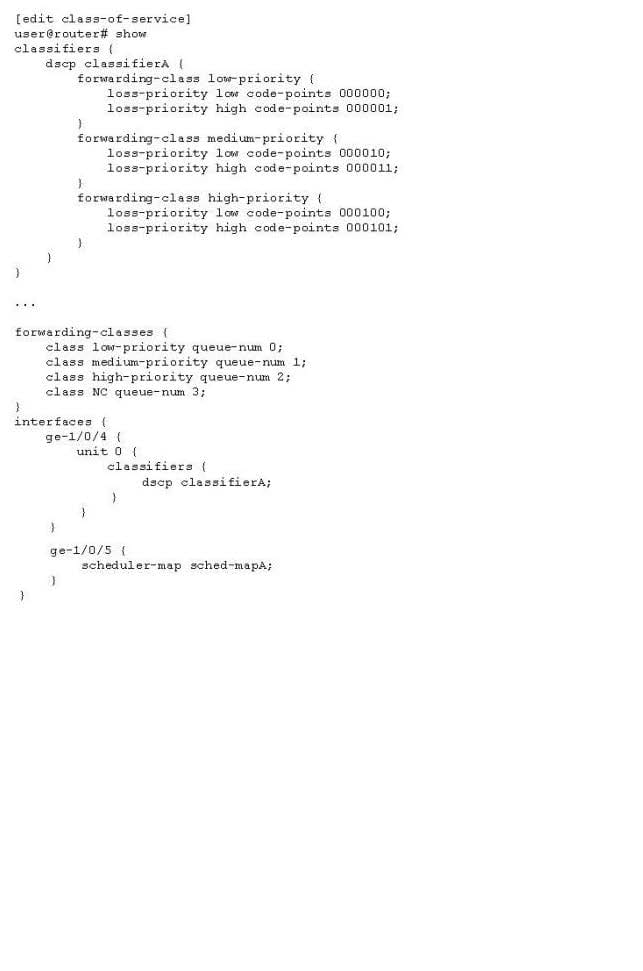
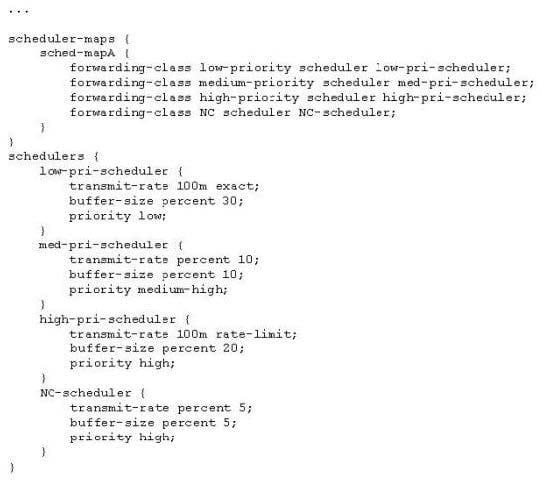
You manage an MX series router (with 100 ms buffer size per port) that includes the configuration shown in the exhibit. Traffic marked with DSCP 000101 is entering the ge- 1/0/4 interface at 102 Mbps. The traffic exits the device on the ge-1/0/5 interface. There is no other traffic transiting the router. What happens to traffic exceeding 100 Mbps?
A. Traffic exceeding 100 Mbps is forwarded.
B. Traffic exceeding 100 Mbps is buffered.
C. Traffic exceeding 100 Mbps is redirected to a rate limiter.
D. Traffic exceeding 100 Mbps is dropped.
Related Exams:
Tips on How to Prepare for the Exams
Nowadays, the certification exams become more and more important and required by more and more enterprises when applying for a job. But how to prepare for the exam effectively? How to prepare for the exam in a short time with less efforts? How to get a ideal result and how to find the most reliable resources? Here on Vcedump.com, you will find all the answers. Vcedump.com provide not only Juniper exam questions, answers and explanations but also complete assistance on your exam preparation and certification application. If you are confused on your JN0-692 exam preparations and Juniper certification application, do not hesitate to visit our Vcedump.com to find your solutions here.